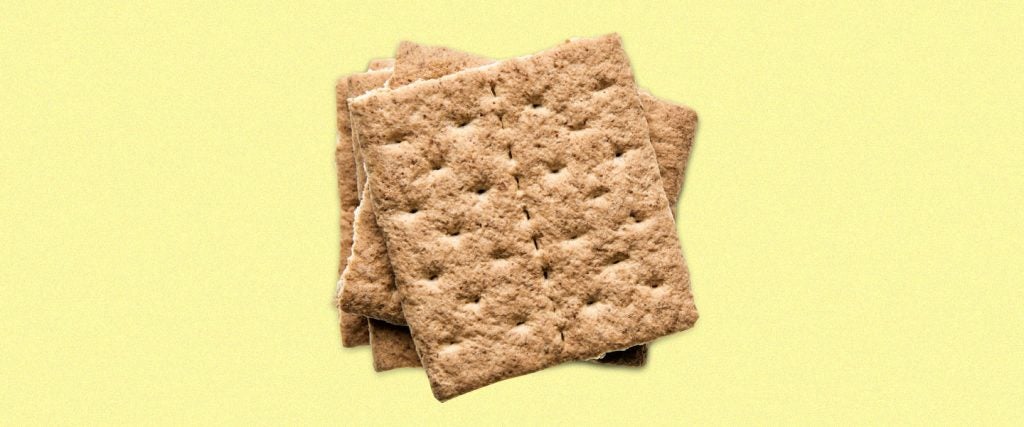When I was a kid, I thought of graham crackers as a snack-time cheat code. They were clearly sweeter than saltine crackers, which meant they could qualify as a dessert in my juvenile mind. At the same time, those golden graham crackers were ostensibly lighter than cookies, and far more likely to be something my mother would approve of.
Cinnamon graham crackers were even more prized as a delicacy since the powdery coating of cinnamon and sugar delivered an additional burst of sweet flavor. Following my first sampling of cinnamon graham crackers, ordinary graham crackers were relegated to the runner-up position, and then plunged into third place once I made the acquaintance of chocolate graham crackers. However, ordinary graham crackers were promptly restored to a position of honor once it dawned on me how effortlessly they could be used as a conduit for peanut butter delivery.
Is there any world in which graham crackers could be considered healthy?
It kinda depends on what you compare them to. And so, let’s stack all three Honey Maid iterations against Nabisco Premium Saltine Crackers (a more traditional cracker) and Chips Ahoy (a more traditional dessert snack item):

Noteworthy here is that the chocolate graham crackers are carrying about 10 percent more bulk to them than their graham cracker buddies, which appears to be the major contributor to their slightly larger caloric total. Also worth mentioning is that the serving size listed on the saltine box has been doubled to provide a roughly equivalent weight to the graham cracker and chocolate chip cookie listings.
What should we be taking away from this?
Several things, including a few that are quite embarrassing to me.
First, unless you’re truly going out of your way to avoid sugar, the difference between a graham cracker and a saltine cracker is negligible where it matters — the raw calories. Moreover, the saltines have nearly 70 percent more sodium, which shouldn’t come as a surprise considering that the cracker is quite literally named after its salt content. If you ask me, the true shocker here is that Chips Ahoy are in the same general vicinity to graham crackers with respect to most of the ingredients that matter, including the calories and the carbohydrate content.
So are graham crackers more like sugar-free crackers or standard cookies?
It seems to me that they’re a rather perfect hybrid of the two. They have about two-thirds of the sweetness of the cookies, but the cinnamon and chocolate options make them taste a bit more like a true dessert even if they don’t quite achieve bakery-level decadence.
The real problem here is that graham crackers secretly invite overindulgence. This is owed almost entirely to the fact that they’re usually pressed into long sheets with miniature perforations instead of being shaped into individual crackers. To make matters worse, they’re also typically divided into three smaller packs of nine, with no simple way to reseal them to preserve freshness. In other words, you’ll be tempted to polish off all nine sheets in a pack just to keep them from growing soft or stale in the future. (In fairness, Chips Ahoy are just as bad on this count — if you’re not careful, 160 calories worth of cookies is more likely to balloon up to 400 to 500 calories in the blink of an eye.)
All of which is to say, if you eat your graham crackers like the few saltines you might have alongside a bowl of chicken noodle soup, you’ll get no trouble out of them. But that’s either a denial of reality or a superhuman show of restraint that should be studied in a lab for future generations to make sense of.

